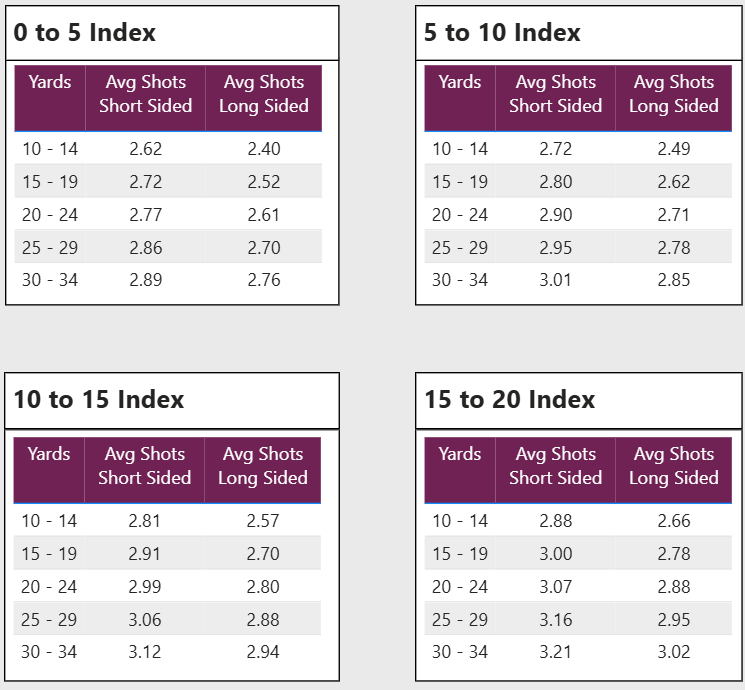- Lou Stagner Golf
- Posts
- Lou Stagner's Newsletter #109
Lou Stagner's Newsletter #109
How Being Short-sided Impacts Scoring

Today’s issue is brought to you by StrackaLine Green Books:
With the heart of tournament season upon us, now is the time to get your yardage books ordered!! StrackaLine’s USGA compliant greens books offer a level of detail and accuracy not available anywhere else for the most precise green reading. Yardage books include complete tee-to-green measurements for every hole.
Use code DATALOU15 to save 15%
Get your books here.

And also brought to you by Hack Motion Golf:
How your wrists work in the swing is critical. The Hack Motion wrist sensor is an amazing training aid. My coach (Mark Crossfield) did a great review of the Hack Motion. Watch that review video here.
For the best price use code GOLFSALE
Get your Hack Motion here.

Weekly Quiz!
To see the correct answer, click the “CONTINUE” button at the bottom of the next page.
Good luck! 😀
How many shots will a 5 index average on the typical 275 yard par four? |
How Being Short-sided Impacts Scoring
When you need to flop shot to a hole that is barely past the edge of the green, that’s called being short-sided. For this analysis I defined short-sided as being when you have less than the 30% of the distance between your ball and the hole is green (e.g., a 20-yard shot with six yards or less of green to work with).
By contrast, you’re long-sided when you’ve got 75 % or more of the green to work with (e.g., a 20-yard pitch with at least 15 yards of green to work with).
The tables below are shots for different skill levels from different distances.

The pattern is ruthlessly consistent
More green to work with equals better scoring. For example, a ~2 index player that is long-sided from 10 to 14 yards in the rough will average ~2.40 shots. If they are short-sided? That jumps to an average of ~2.62 shots. That short-sided shot is nearly a quarter shot more difficult. That’s HUGE given how many greens us amateurs miss.
Three takeaways
Miss to the “big” side on approach. Minimizing how often you short-side it will help you score better without changing anything with your swing.
Get paid on the “easy” chips. Long-sided isn’t party time… you still need to execute. Groove bump-and-runs that land early and release predictably.
Short-side triage. When the inevitable happens, be reasonable. When you are short-sided, don’t chase heroics that turn bogey into double bogey.
Enjoy the rest of The Open Championship!
Finally...
Advertise your business to 35,000+ readers of this newsletter.
Shop Arccos Golf here. (Use code DATALOU15 to save 15%)
Join Team Titleist here.
Shop StrackaLine Green Books here. (Use code DATALOU15 to save 15%)
Listen to the “Hack it Out Golf” podcast on Apple or Spotify.
Submit ideas or feedback here.
Have a great week!
